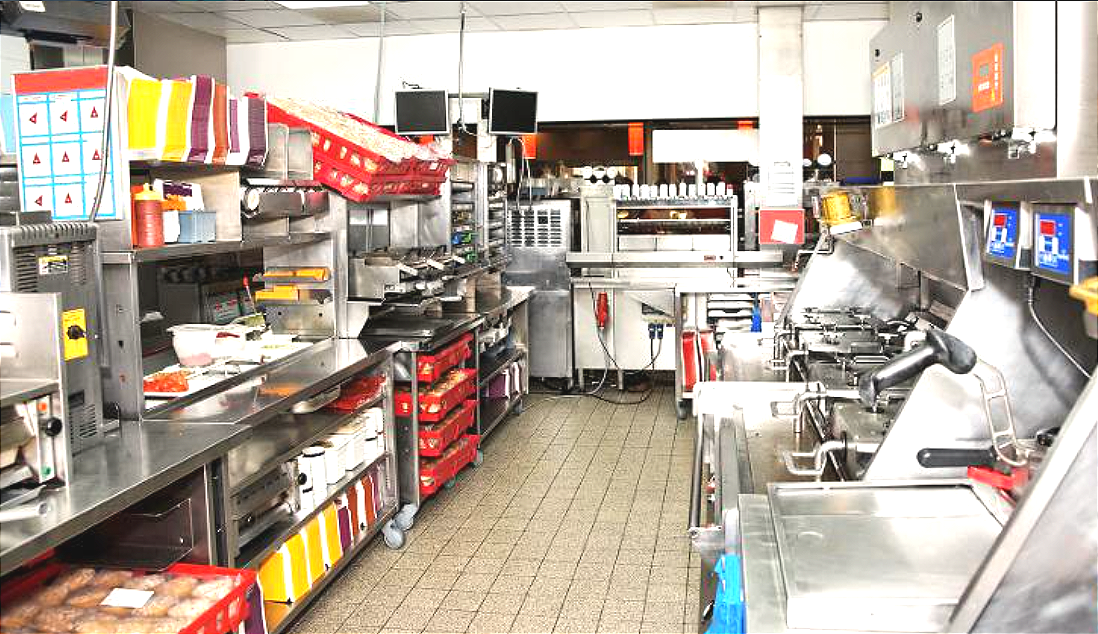5S Inventory Methods

Mastering Restaurant Inventory with the 5S Method: A Recipe for Efficiency
In the fast-paced world of restaurants, efficiency is everything. From the kitchen to the stockroom, every second wasted searching for an ingredient or correcting a misplaced order cuts into your bottom line. That’s where the 5S workplace organization method comes in—a tried-and-true system for keeping things sorted, streamlined, and stress-free.
Originally developed by Toyota in Japan, the 5S method helps businesses optimize their workspaces for maximum efficiency, and it’s a game-changer for restaurant inventory management. Let’s break it down and see how you can use it to keep your stockroom as organized as your kitchen’s mise en place.
1. Sort: Keep What You Need, Ditch the Rest

Ever found a forgotten case of expired condiments or a stack of takeout containers from three promotions ago? That’s why the first step is sorting—eliminating excess inventory and keeping only what’s necessary.
- Declutter: Remove outdated, expired, or rarely used items.
- Prioritize: Keep high-use items accessible and move slow movers elsewhere.
- Categorize: Separate ingredients, disposables, and equipment so they don’t mix.
By clearing out the clutter, you create space for what really matters—fresh ingredients and efficient workflows.
2. Set in Order: A Place for Everything, and Everything in Its Place

Once you’ve sorted through the stock, it’s time to assign everything a proper home. This step is all about creating a logical, easy-to-navigate system so that anyone—whether it’s a new hire or a seasoned chef—knows exactly where to find what they need.
- Store by category: Keep dry goods together, separate cleaning supplies, and organize cold storage by food type.
- Label everything: Use clear labels and color-coded bins to avoid confusion.
- First In, First Out (FIFO): Arrange inventory so older stock is used first, reducing waste.
A well-ordered inventory means less time searching, fewer mistakes, and a smoother operation overall.
3. Shine: Keep It Clean and Inspection-Ready

A clean stockroom is a functional stockroom. Regular cleaning and maintenance prevent pests, spills, and health violations.
- Set a cleaning schedule: Daily, weekly, and monthly tasks ensure everything stays spotless.
- Inspect while you clean: Check for expired items, leaks, or damaged packaging.
- Keep pathways clear: No one wants to trip over a stack of flour bags during a dinner rush.
A well-shined space isn’t just about hygiene—it’s about efficiency, safety, and compliance.
4. Standardize: Make Organization the Norm

An organized inventory isn’t a one-time event—it’s a system. Standardization ensures everyone follows the same process, so your stockroom stays in top shape.
- Create clear inventory procedures: Establish rules for how items are received, stored, and tracked.
- Use checklists: Staff should follow the same inventory count process every time.
- Train your team: Everyone from line cooks to managers should know the system.
Standardization eliminates confusion and ensures that organization is a habit, not a headache.
5. Sustain: Make It Stick
The last—and most crucial—step is sustaining these practices over the long run. Consistency is key to making the 5S method part of your restaurant’s culture.
- Regular audits: Monthly inventory reviews keep things in check.
- Assign responsibility: Designate team members to oversee inventory organization.
- Reward good habits: Recognize employees who follow and improve the system.
When you sustain the 5S method, you create a restaurant that runs like a well-oiled machine—saving time, reducing waste, and boosting profitability.
Restaurant Inventory 5S Checklist
Use this Yes/No checklist to evaluate your restaurant’s inventory organization. If you answer “No” to any question, that’s an area to improve!
Here is the link to Download on Google Sheets:
Sort
☐ Is older inventory always used before newer stock? (Yes/No)
☐ Are broken, outdated, or unused items regularly removed from storage? (Yes/No)
☐ Is expired or spoiled food identified and discarded before it affects operations? (Yes/No)
☐ Do all inventory items fit within the designated shelving and storage space? (Yes/No)
☐ Do team members easily find what they need without searching? (Yes/No)
☐ Is there a clear system to prevent overordering or running out of essential items? (Yes/No)
Set in Order
☐ Is there a labeling system that clearly identifies all inventory items? (Yes/No)
☐ Are frequently used ingredients stored near prep stations to reduce steps? (Yes/No)
☐ Is each item placed in a designated area for easy access and restocking? (Yes/No)
☐ Are shelves arranged to maximize space without overcrowding? (Yes/No)
Shine
☐ Are food storage areas cleaned regularly and free of debris? (Yes/No)
☐ Are raw proteins stored separately from other ingredients to prevent cross-contamination? (Yes/No)
☐ Are chemicals stored safely away from food and prep areas? (Yes/No)
☐ Are equipment and dishware cleaned thoroughly after each use? (Yes/No)
Standardize
☐ Is there a consistent system for placing and receiving inventory orders? (Yes/No)
☐ Are deliveries checked and stocked in the same manner every time? (Yes/No)
☐ Do employees avoid leaving their stations during busy hours to retrieve missing items? (Yes/No)
☐ Can new employees quickly locate items based on the organization system? (Yes/No)
Sustain
☐ Are employees trained on inventory best practices and restocking procedures? (Yes/No)
☐ Are stock levels monitored regularly to adjust order quantities as needed? (Yes/No)
☐ Is there a designated person responsible for maintaining inventory organization? (Yes/No)
☐ Does management actively review and refine inventory processes? (Yes/No)
Final Thoughts
A cluttered stockroom leads to frustration, inefficiency, and wasted dollars. By implementing the 5S method, you turn your inventory space into a well-organized, high-functioning asset—one that helps your team work smarter, not harder.
Because at the end of the day, an organized restaurant is a profitable restaurant. And that’s a recipe for success.


